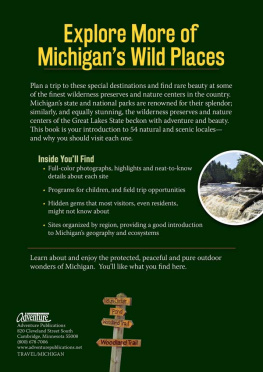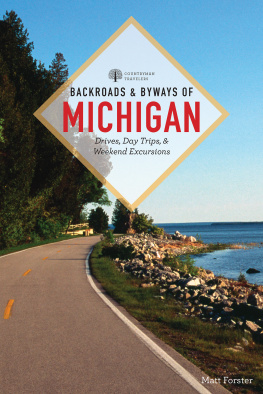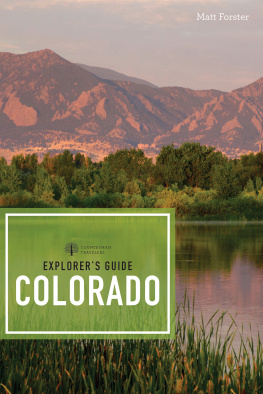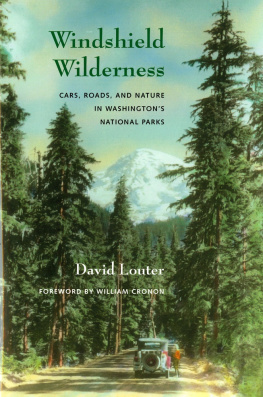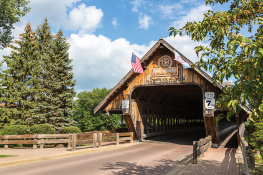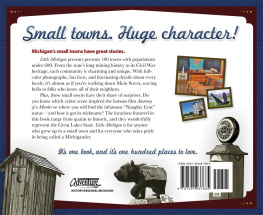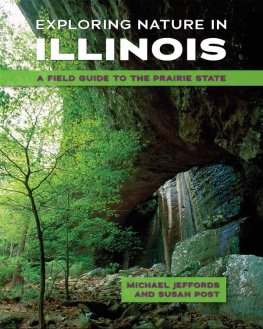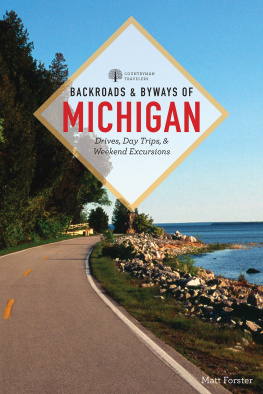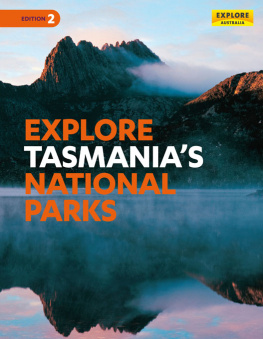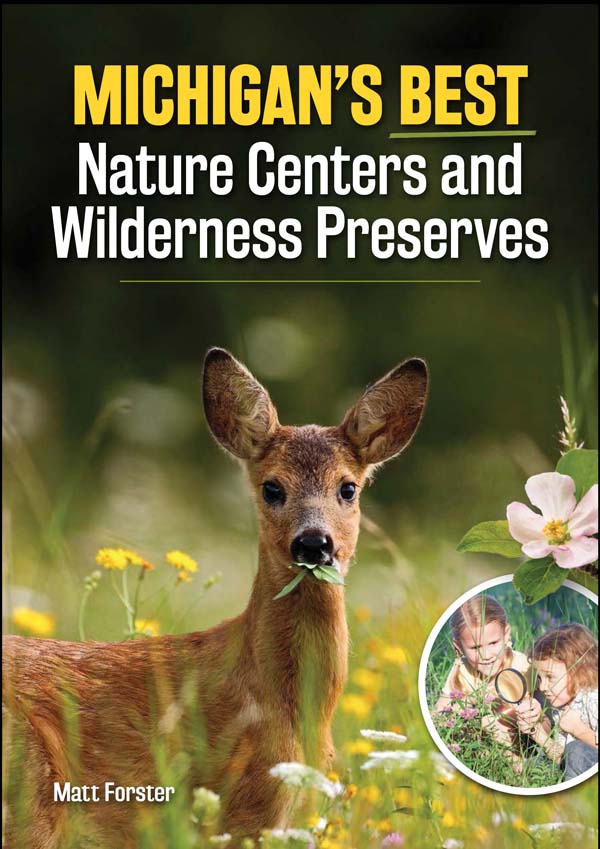
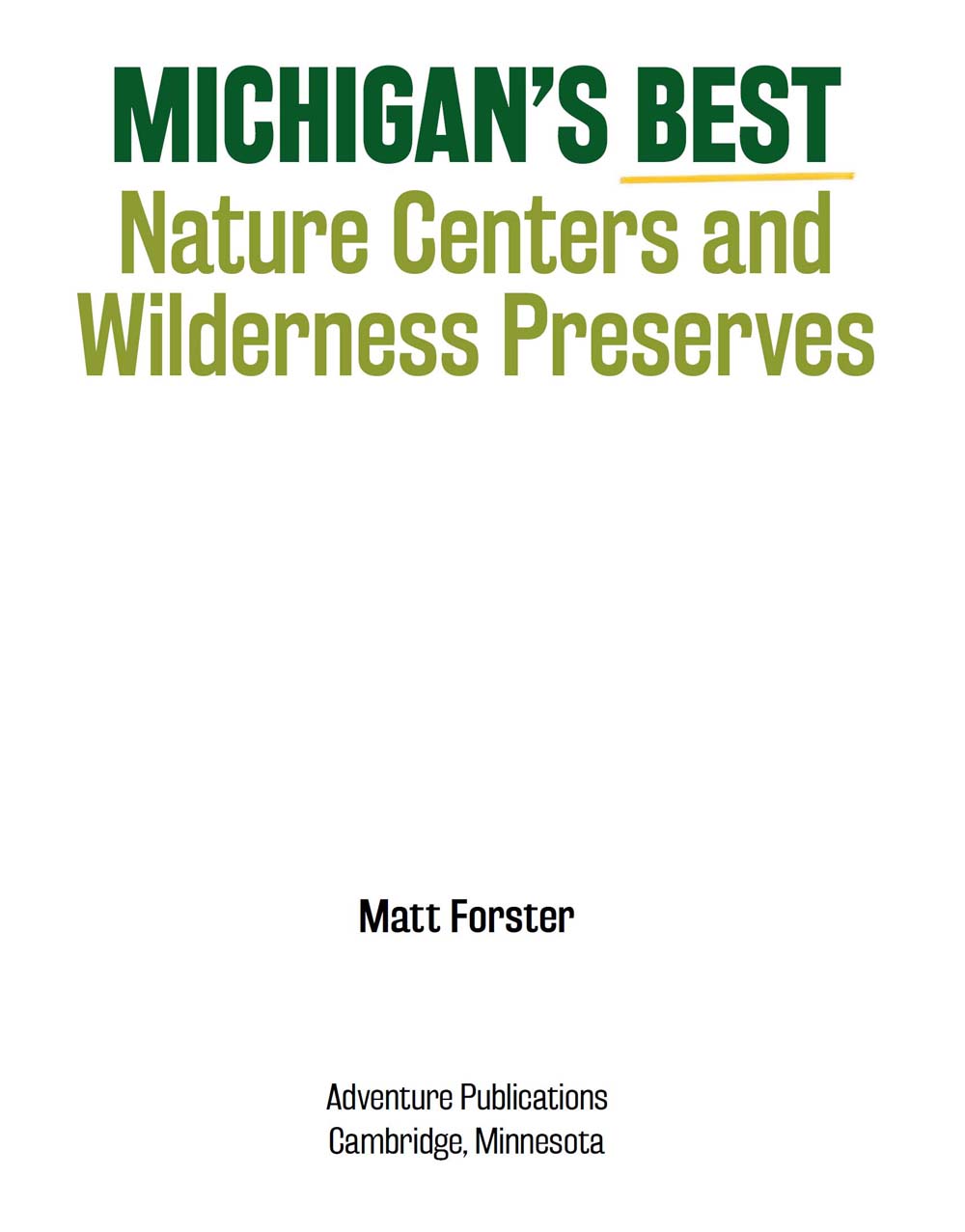
Cover and book design by Jonathan Norberg
Edited by Brett Ortler
Photo credits:
Cover photos: All acquired via Shutterstock, with the exception of the sign post, courtesy of Matt Forster
All photos by Matt Forster unless noted
The following photos are copyright of their respective photographers.
Shutterstock:
10 9 8 7 6 5 4 3 2 1
Copyright 2017 by Matt Forster
Published by Adventure Publications
An imprint of AdventureKEEN
820 Cleveland Street South
Cambridge, Minnesota 55008
(800) 678-7006
www.adventurepublications.net
All rights reserved
Printed in U.S.A.
ISBN: 978-1-59193-680-0 eISBN: 978-1-59193-681-7
Table of Contents
Introduction
I didnt come to fully appreciate nature centers until my wife and I had kids. Theres something about kids and nature. Its like kids and mac n cheese, or kids and playgrounds. They go together. Its not always like that for adults, sadly. One day we find that weve spent a decade or two in classrooms or offices or in traffic, and all that time we spent outdoors as children seems a lifetime ago. So several years ago, as newly minted parents with a son and a daughter in hand, my wife and I began looking for different ways to learn about nature and spend some time outdoors.
Let me just say that if you enjoy nature centers, land conservancies, and preserves, Michigan is a great place to live. Our searches have been fruitful beyond our expectations. There are so many good people working behind the scenes, running organizations, donating land, and volunteering their time so that people will have opportunities to enjoy this states natural beauty today and for generations to come.
Preserving something for the future is a theme that is echoed over and over in the mission statements and literature from nature-oriented organizations across the state. They are seeking to conserve forests and wetlands, bogs and fens, meadows and prairies, as well as historic farming practices, local culture, and the traditions of American Indian life.
While trying to capture what makes each of these sites worth visiting, I was often stymied by the inadequacy of words to describe the experience. Walking along one trail in west Michigan, I stopped for a moment and was overwhelmed by the sounds around me. Leaves sighing in the wind, birds fluttering in the underbrush, the trickle of water, frogs, cicadas, birdsong.
Then there are the smells. A cedar swamp smells sweeter than you might imagine. Tramping around a field of fragrant wildflowers, theres the unexpected bitter tang of broken stems. On a humid day, you might suddenly smell iron in the air and feel the cold, dry breeze that warns of a storm coming.
Yet none of these is a constant. A better writer could describe these locations so that you would feel like you have breathed the very air, but in the end, that persons experience would not be your experience. It keeps on changing, day to day, season to season.
As I traveled around researching sites for this project, a couple patterns emerged. Because these patterns necessarily affected what I included in this book, I want to share my observations.
By and large, nature centers cluster on the border between town and country, areas where there are plenty of people nearby who feel they dont have regular encounters with the natural world. After all, large populations are needed if a nonprofit organization is going to succeed. So though it almost seems ironic, most of the states nature centers are within driving distance of the states larger population centers.
In the more rural regions of the state, nature is preserved and conserved without a lot of the bells and whistles. Land conservancy groups can purchase land cheaper, when its farther from town, and they dont need a large group of volunteers and donors to maintain and manage a property once its been acquired.
I expected, for example, to find nature centers all over the Upper Peninsula, but, frankly, theyre just not there. There are thousands of acres of wildlife and nature preserves, parks for outdoor recreation, and even some outdoor education opportunities, but nature centers, as weve come to understand them, are absent. Near metropolitan Detroit, where someone might understandably not expect to find many nature centers, there are more than a dozen.
There are some notable omissions in the book that deserve a mention, if only here in the introduction. These are Michigans national parks. In the nomenclature of the National Park Service, Michigan has only one national park, Isle Royale in Lake Superior. The Great Lake State also has, appropriately enough, two national lakeshores, Sleeping Bear Dunes and Pictured Rocks. An entire book could be written about the natural beauty preserved in these three parks. Each has a visitor center that in some way explains its unique natural attractions.
In addition to its eponymous dunes, Sleeping Bear Dunes National Lakeshore offers a scenic drive through rolling, wooded dunes with panoramic views of the park and the lake. There is an early twentieth-century life-saving stationnow a maritime museumon site, as well as the historic buildings of Glen Haven, a former village site. The park also features two of the finest campgrounds on Lake Michigan.
Pictured Rocks National Lakeshore offers a different geological experience than its neighbor in the south. In contrast to Sleeping Bears warm sand dunes, Pictured Rocks features bright sandstone cliffs overlooking Lake Superior. All told, there are 15 miles of cliffs, which tower 50 to 200 feet over the water. Visitors either find a motel in Grand Marais or Munising, or they set up camp in one of the parks campgrounds. To see the cliffs you can hike out to the bluffs or buy tickets for the tour boat that docks in Munising. There are a couple of waterfalls in the park that are also worth a visit.
Its not for nothing that Isle Royale is often included on the annual lists of the most remote national parks. If youve ever driven 10 hours to the U.P.s Keweenaw Peninsula only to jump on the ferry for the 3-hour trip across Lake Superior to the island, you know what I am talking about. Though you could make a day trip out of Isle Royale, the boat ride there and back makes it a long one. Theres a lodge on site for overnight visits, but most people come for the incredible backpacking, the chance to see moose, beaver, and maybe even wolves, and the best wilderness camping in the Midwest.
If you visit every preserve or nature center in this book, you will find that not all of them are created equal. Some have been underfunded for many years, with facilities that need a little TLC. Others have benefited from a handful of amazing donors or an incredibly active corps of volunteers. All of these properties, however, have something to offer the publicthe closer you look, the clearer the value of each place becomes. And if you come across a place that you think could use some work, take it as a sign, roll up your sleeves, and join the fray.
As always, I hope you enjoy these nature centers and preserves, and maybe Ill see you out there!
Hours and Fees
Most, if not all, of the sites in this book are labors of love, and they are often run by volunteers and charitable organizations. Most require a nominal fee, which Ive included with each account. Some of the sites in the book are part of Michigans State Park system; to enter them, youll need a Michigan State Recreation Passport, an annual vehicle pass that gives you access to all of the state parks in the system for just $11. (Nonresidents are charged $31.) For specifics, and all the benefits of the program, visit: www.michigan.gov/dnr/
Next page
